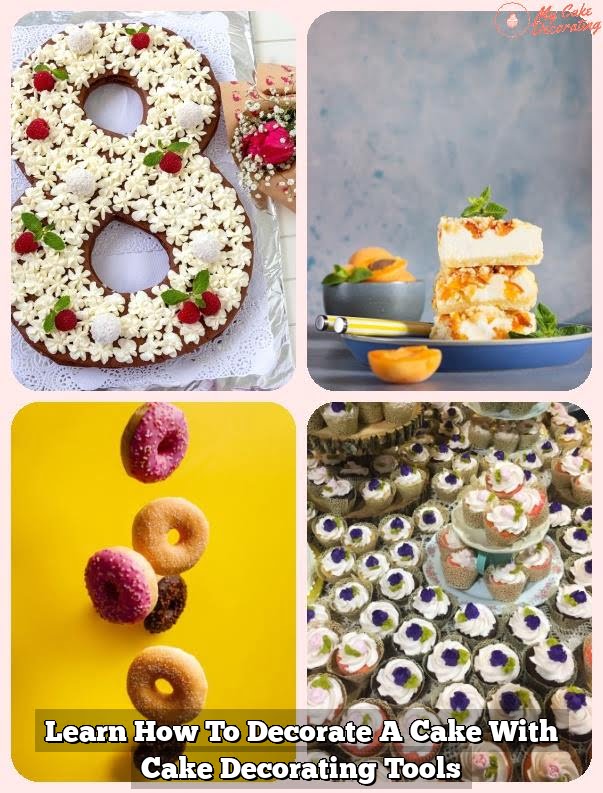Are you wondering how to decorate a broken cake? Embracing imperfection and turning a broken cake into a stunning work of art is not only possible but can also be incredibly rewarding. In this article, we will explore the beauty of imperfection and provide you with tips and creative ideas for decorating a broken cake.
When our cakes don’t quite turn out as planned, it can be easy to feel frustrated or disappointed. However, by embracing imperfection, we can transform a mishap into an opportunity for creativity and innovation. Whether your cake has cracks, crumbles, or other flaws, there are numerous ways to turn it into a masterpiece.
In the following sections, we will discuss how to carefully assess the damage, guide you through the process of crumb coating and repairing any imperfections, explore different decorating options such as using fondant or frosting, and provide creative ideas for incorporating decorative elements like fresh fruit, edible flowers, or chocolate shards to divert attention from any remaining flaws.
We will also offer suggestions for using cake toppers, edible glitter, or other decorative accents to enhance the overall appearance of the cake and provide tips for adding final touches and presenting it in a way that highlights its beauty.
So keep reading to discover how you can embrace the uniqueness of a broken cake and turn it into a one-of-a-kind creation.
Assessing the Damage
When faced with a broken cake, the first step is to carefully assess the damage before proceeding with any decorating. Here are some tips for evaluating the extent of the damage and determining the best approach for turning your broken cake into a stunning masterpiece:
1. Careful Examination: Take a close look at the broken cake to assess the extent of the damage. Look for any cracks, uneven edges, or areas that may have crumbled. By carefully examining the cake, you can determine the best course of action for repairs and decorating.
2. Preparing for Repairs: Before moving on to decorating, it’s important to address any structural or stability issues with the cake. Assess whether any layers need to be re-stacked, reinforced with additional support, or trimmed to create a level surface for decorating.
3. Consider Decorating Options: Based on your assessment of the damage, consider which decorating options would work best for concealing any imperfections. Whether it’s using fondant to create a smooth finish or strategically applying frosting to cover up cracks and blemishes, choosing the right decorating technique will depend on the specific condition of your broken cake.
By carefully assessing the damage and planning your approach to decorating, you can transform your broken cake into a visually stunning creation that showcases your creativity and skill in overcoming challenges. Remember that embracing imperfection can lead to unexpected beauty and create a one-of-a-kind masterpiece that delights both the eyes and taste buds.
Crumb Coating
When it comes to decorating a broken cake, crumb coating is a crucial step in the process. Whether the cake has minor cracks or larger structural damage, crumb coating helps to create a smooth and seamless foundation for further decoration. This step not only provides structural support but also ensures that the final decorative elements adhere properly to the surface of the cake.
Step-by-Step Guide
To start the crumb coating process, begin by preparing a batch of your preferred frosting or icing. It’s important to choose a frosting that is easy to work with and can hold its shape. Once you have your frosting ready, carefully apply a thin layer over the entire cake, using an offset spatula to spread it evenly. This initial layer will help seal in any crumbs and create a smooth surface for additional layers of frosting.
After applying the first layer of frosting, allow the cake to chill in the refrigerator for at least 30 minutes to let it set. Once chilled, apply a second layer of frosting, using the offset spatula to create an even and level surface. This second layer acts as a “crumb coat,” sealing in any imperfections and providing a base for further decoration.
Repairing Imperfections
During the crumb coating process, take extra care to fill in any cracks or gaps in the cake with additional frosting. Use the offset spatula to smooth out any uneven areas and create a flawless base for decorating. By paying attention to these details during the crumb coating stage, you can effectively repair any imperfections and prepare the cake for its final decorative touches.
By mastering the art of crumb coating, even a broken cake can be transformed into a stunning masterpiece. This essential step sets the stage for creative cover-ups and decorative elements that will divert attention from any remaining flaws in the cake’s structure. With patience and precision, crumb coating allows you to embrace imperfection and turn it into beauty on your dessert table.
Fondant or Frosting
When it comes to decorating a broken cake, one of the most important decisions to make is whether to use fondant or frosting as the primary covering for the cake. Both options have their own unique qualities and can be used to effectively cover up any remaining flaws in the cake.
Exploring Fondant
Fondant offers a smooth and polished look that can give the cake a professional and elegant appearance. It’s also versatile in terms of shaping and molding, making it a great choice for creating intricate designs or sculpted decorations. When using fondant to cover a broken cake, it’s important to ensure that the surface is properly prepared with a crumb coat to provide a smooth base for the fondant.
Opting for Frosting
On the other hand, frosting provides a traditional and delicious option for covering a broken cake. It can be spread or piped onto the cake, allowing for varying textures and decorative effects.
Additionally, frosting can be easily flavored and colored to match the theme or flavor of the cake. When choosing frosting as the primary covering, it’s essential to apply a crumb coat as well and ensure that any imperfections are smoothed out before adding the final layer of frosting.
In making the decision between fondant and frosting, it’s important to consider not only the aesthetic result but also personal preferences and skill level when it comes to working with each option. Regardless of which covering is chosen, both fondant and frosting offer an opportunity to transform a broken cake into a beautiful masterpiece worthy of celebration.
Creative Cover-Up
When it comes to decorating a broken cake, the key is to get creative and find ways to cover up any remaining imperfections. Here are some creative cover-up ideas for turning a flawed cake into a stunning masterpiece:
- Incorporating decorative elements: Consider using fresh fruit, edible flowers, or chocolate shards to divert attention from any remaining imperfections on the cake. Fresh berries can add a pop of color and distract from cracks or uneven surfaces, while edible flowers can bring a delicate and natural touch to the overall appearance.
- Textured frosting designs: Instead of opting for a smooth frosting finish, consider embracing textured frosting designs. Use a piping bag to create intricate patterns or designs on the cake that not only cover up flaws but also add visual interest. Swirling patterns, rosettes, or ruffles can add depth and character to the cake’s appearance.
- Chocolate ganache drizzle: A rich and decadent chocolate ganache drizzle can add an elegant touch to a broken cake. Drizzling chocolate ganache over the top of the cake can help conceal any imperfections while adding an extra layer of flavor and visual appeal.
By getting creative with decorative elements and design techniques, it’s possible to transform a broken cake into a work of art that captivates both visually and in taste. Embracing creativity and thinking outside the box allows for turning flaws into unique features that make the cake one-of-a-kind.
Cake Toppers and Accents
When it comes to decorating a broken cake, the use of cake toppers and decorative accents can play a crucial role in enhancing the overall appearance of the cake. Whether it’s covering up remaining imperfections or adding an extra touch of elegance, carefully chosen toppers and accents can elevate a broken cake into a stunning masterpiece.
One popular option for concealing imperfections is using edible glitter or gold leaf to add a touch of glamour to the cake. This not only camouflages any flaws but also creates a visually appealing focal point. In addition, incorporating fresh flowers as cake decorations can add a pop of color and natural beauty that draws attention away from any remaining imperfections.
Furthermore, considering unique and creative cake topper ideas such as miniature bunting, custom-made figurines, or even personalized messages can make the broken cake more memorable and meaningful. These toppers not only divert attention from flaws but also add a personal touch that makes the cake extra special.
| Cake Topper/Accent | Effect |
|---|---|
| Edible Glitter/Gold Leaf | Adds glamour and camouflages flaws |
| Fresh Flowers | Adds color and natural beauty that distracts from imperfections |
| Custom Cake Topper | Adds personal touch and makes the cake more memorable |
Embracing the Flaws
When it comes to decorating a broken cake, one of the most important steps is to embrace the flaws and imperfections. Rather than viewing a broken cake as a disaster, it can be seen as an opportunity to create something truly unique and beautiful. Embracing the flaws allows for creativity and innovation in the decorating process, resulting in a stunning work of art that showcases the resilience of the baker.
One way to embrace the flaws is by incorporating creative cover-ups. This can include using decorative elements like fresh fruit, edible flowers, or chocolate shards to divert attention from any remaining imperfections. By strategically placing these elements around the cake, it’s possible to draw focus away from any cracks or uneven surfaces, transforming them into intentional design choices.
Another approach to embracing flaws is by using meaningful decorations as cake toppers and accents. These items can serve as focal points that highlight the beauty of the overall design while adding a personal touch. Edible glitter, personalized messages, or handmade fondant decorations are just some examples of how bakers can turn imperfections into opportunities for artistic expression.
| Embracing Flaws Tip | Details |
|---|---|
| Creative Cover-ups | Use decorative elements like fresh fruit or chocolate shards |
| Meaningful Decorations | Utilize personalized messages or handmade fondant decorations |
Final Touches and Presentation
In conclusion, decorating a broken cake is not just about covering up imperfections, but embracing the beauty of imperfection and turning it into a stunning work of art. By carefully assessing the damage, crumb coating, and considering different decorating options such as fondant or frosting, anyone can transform a broken cake into a beautiful creation.
Adding creative cover-ups such as fresh fruit, edible flowers, or chocolate shards can divert attention from any remaining imperfections and enhance the overall appearance of the cake. Additionally, using cake toppers, edible glitter, or other decorative accents can further elevate the look of the cake and make it truly unique.
Ultimately, embracing the flaws of a broken cake is about celebrating its uniqueness and turning it into a one-of-a-kind creation. By adding final touches and presenting it in a way that highlights its beauty, anyone can showcase their creativity and turn what could have been a disaster into a masterpiece. So don’t be discouraged by a broken cake – instead, see it as an opportunity to create something truly special.
Frequently Asked Questions
What Can You Do With a Cake That Falls Apart?
When a cake falls apart, there are several things you can do to salvage it. One option is to turn the crumbled cake into cake pops by mixing it with frosting, rolling it into balls, and then dipping them in chocolate or candy coating.
Another option is to use the crumbled cake as a topping for an ice cream sundae or parfait. You can also repurpose the cake crumbs as a layer in a trifle or as a crust for cheesecake.
How Do You Cover a Broken Cake?
If you have a broken cake, you can cover up the imperfections by carefully frosting the entire cake with a generous layer of buttercream or ganache. The frosting will help hold the pieces together and create a smooth surface for decorating.
Additionally, you can use edible decorations like sprinkles, edible flowers, or fruit slices to further conceal any cracks or breaks.
How Do You Decorate a Collapsed Cake?
Decorating a collapsed cake can be challenging, but it’s not impossible. You can use frosting to build up areas where the collapse occurred, creating a more even surface for decorating. Another option is to embrace the unique shape of the collapsed cake and decorate it in a way that complements its new form.
For example, you could turn it into a whimsical “ruined castle” cake by adding broken turrets and crumbling walls made from fondant or candy. With some creativity and patience, even a collapsed cake can become a work of art.

Welcome to my blog about home and family. This blog is a place where I will share my thoughts, ideas, and experiences related to these important topics. I am a stay-at-home mom with two young children. I hope you enjoy reading it! and may find some helpful tips and ideas that will make your home and family life even better!





